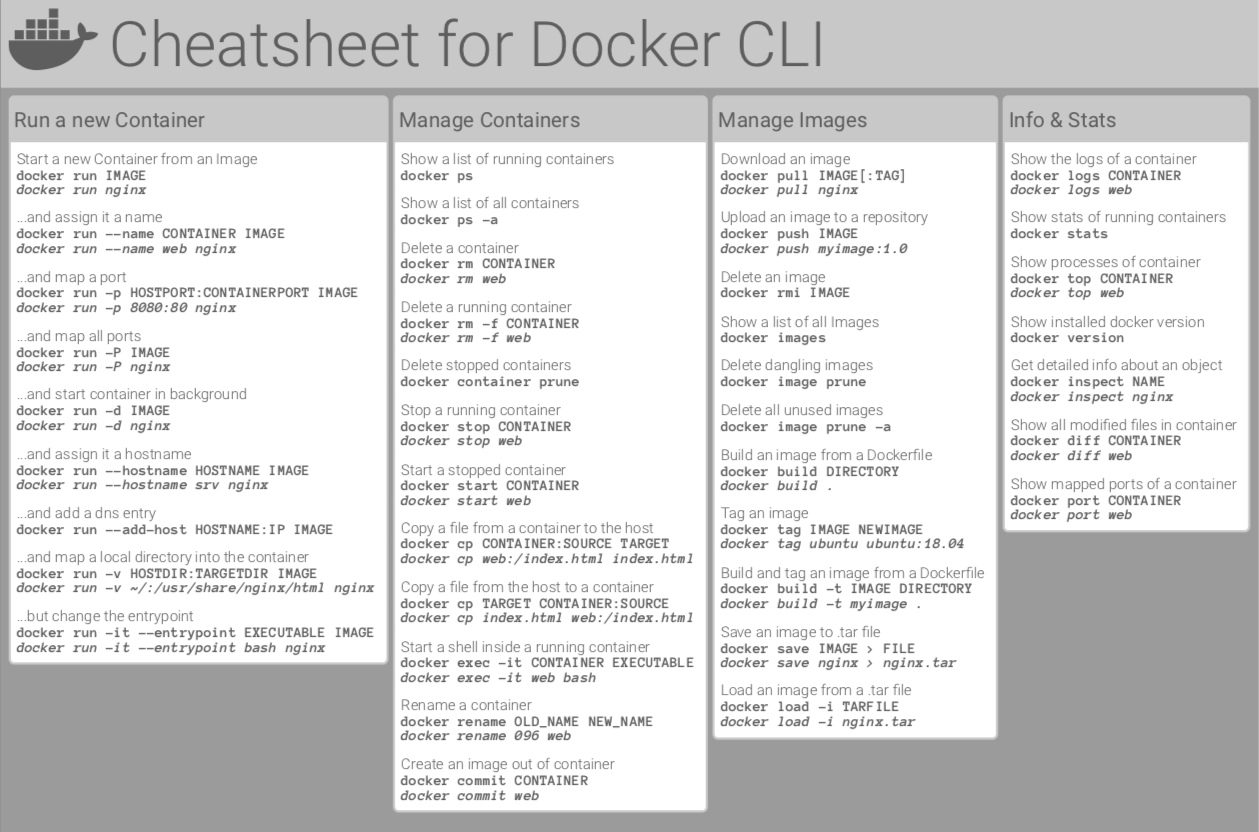

- #Docker run image and attach how to#
- #Docker run image and attach install#
- #Docker run image and attach code#

The complete list of commands that can be specified in this file are explained at. This context can be a path on your local filesystem or a URL to a Git repository.ĭockerfile is usually called Dockerfile. docker image build command uses this file and executes all the commands in succession to create an image.īuild command is also passed a context that is used during image creation. A Dockerfile is a text document that contains all the commands a user could call on the command line to assemble an image. Dockerfileĭocker build images by reading instructions from a Dockerfile.
#Docker run image and attach how to#
This section explains how to create a Docker image. Write a Dockerfile for your application (see Creating your Image section).Learn how to build and run a Docker Container.To build a Docker image on the host machine you will need to: On the target machine the Docker image is pulled from the registry and is run in a Docker container. The image is built from the Dockerfile on the host and is pushed on a Docker registry that makes it accessible from a remote device (target machine).

#Docker run image and attach code#
In this workflow your source code and Dockerfiles are present on your local device (host machine). We recommend the above workflow for building and deploying your applications with Docker on Jetson. To build a Docker image for Jetson with CUDA and ZED SDK, you can use the following base image:įROM stereolabs/zed:3.0-devel-jetson-jp4.2įor a detailed example on how to build your own image, see Creating your Docker Image. Now that QEMU is installed, we can build an application with CUDA and ZED SDK by specifying the correct parent image for our container application.įor example, to build a Docker image for Jetson with CUDA, the following base image can be used: Building Jetson Container on your x86 Workstation Note: For advanced details on using QEMU and Docker, please refer to this repository on GitHub. To add this feature, we will need to use a Linux for Tegra (L4T) base image from Nvidia DockerHub (see next section for additional details). However, it is not yet possible to build and run CUDA accelerated applications with QEMU. At this point, we can now run aarch64 programs on the host x86_64 workstation. The installation was successful, the emulation is working.
#Docker run image and attach install#
Sudo apt-get install qemu binfmt-support qemu-user-static # Install the qemu packagesĭocker run -rm -privileged multiarch/qemu-user-static -reset -p yes # This step will execute the registering scriptsĭocker run -rm -t arm64v8/ubuntu uname -m # Testing the emulation environment #aarch64

It allows users to to build ARM CUDA binaries on your x86 machine without needing a cross compiler.įirst, let’s see what happens before setting up the emulation when trying to execute a program compiled for a different architecture : QEMU is an open source machine emulator and virtualizer. We’ll be using QEMU and Docker to set up our emulated environment. Platforms such as Jetson Nano are limited in memory and disk space it may not have the resources to build large and complicated packages with AI features. Using ARM emulation will allow us to build the application on a fast x86 host and launch it on the Jetson Nano.Ĭompiling is very resource-intensive. Speeding up application development: For example, building an application on NVIDIA Jetson Nano can be very slow. The main benefits of cross-compilation for Jetson are: This section explains how to build an application on an x86_64 platform and run it on an NVIDIA Jetson with ARM architecture. Running and Building ARM Docker Containers on x86


 0 kommentar(er)
0 kommentar(er)
